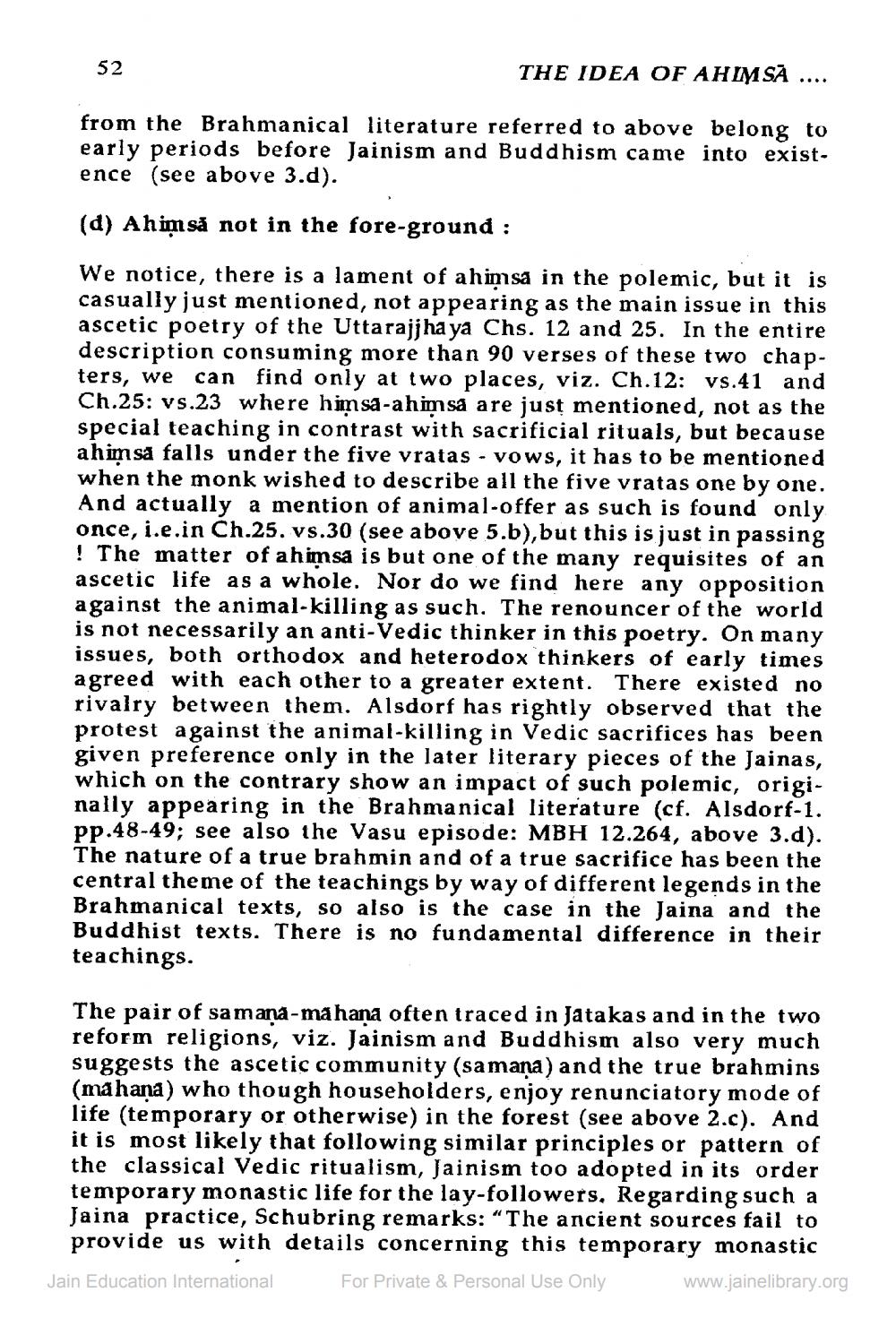________________
52
THE IDEA OF AHIMSA ....
from the Brahmanical literature referred to above belong to early periods before Jainism and Buddhism came into existence (see above 3.d).
(d) Ahiņ să not in the fore-ground :
We notice, there is a lament of ahimsa in the polemic, but it is casually just mentioned, not appearing as the main issue in this ascetic poetry of the Uttarajjha ya Chs. 12 and 25. In the entire description consuming more than 90 verses of these two chapters, we can find only at two places, viz. Ch.12: vs.41 and Ch.25: vs.23 where him sa-ahim sa are just mentioned, not as the special teaching in contrast with sacrificial rituals, but because ahim sa falls under the five vratas - vows, it has to be mentioned when the monk wished to describe all the five vratas one by one. And actually a mention of animal-offer as such is found only once, i.e.in Ch.25. vs.30 (see above 5.b),but this is just in passing ! The matter of a himsa is but one of the many requisites of an ascetic life as a whole. Nor do we find here any opposition against the animal-killing as such. The renouncer of the world is not necessarily an anti-Vedic thinker in this poetry. On many issues, both orthodox and heterodox thinkers of early times agreed with each other to a greater extent. There existed no rivalry between them. Alsdorf has rightly observed that the protest against the animal-killing in Vedic sacrifices has been given preference only in the later literary pieces of the Jainas, which on the contrary show an impact of such polemic, originally appearing in the Brahmanical literature (cf. Alsdorf-1. pp.48-49; see also the Vasu episode: MBH 12.264, above 3.d). The nature of a true brahmin and of a true sacrifice has been the central theme of the teachings by way of different legends in the Brahmanical texts, so also is the case in the Jaina and the Buddhist texts. There is no fundamental difference in their teachings.
The pair of sa mana-ma hana often traced in Jatakas and in the two reform religions, viz. Jainism and Buddhism also very much suggests the ascetic community (samana) and the true brahmins (ma hana) who though householders, enjoy renunciatory mode of life (temporary or otherwise) in the forest (see above 2.c). And it is most likely that following similar principles or pattern of the classical Vedic ritualism, Jainism too adopted in its order temporary monastic life for the lay-followers, Regarding such a Jaina practice, Schubring remarks: "The ancient sources fail to provide us with details concerning this temporary monastic Jain Education International For Private & Personal Use Only www.jainelibrary.org




